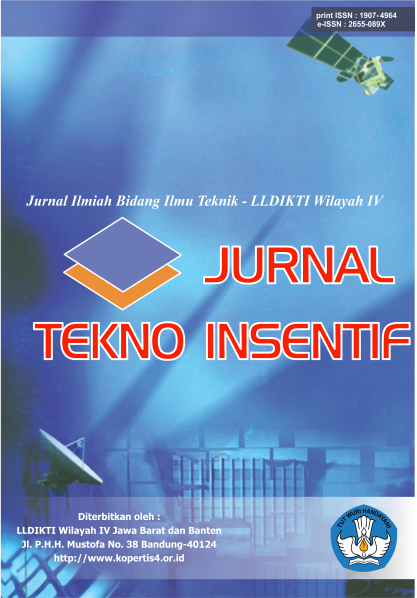Experimental Investigation of The Heat Transfer Characteristics of Hybrid Nanofluid Al₂O₃CuO-Distilled Water with The Variation of Concentration Ratios
Abstrak
AbstrakPanas berlebih yang terjadi pada CPU (Central Processing Unit) komputer dapat menyebabkan penurunan kinerja komputer. Penggunaan fluida pendingin yang diaplikasikan pada perangkat waterblock dapat membantu penurunan temperatur panas berlebih. Salah satu fluida pendingin yang dapat digunakan pada waterblok adalah fluida pendingin jenis nanofluida. Nanofluida merupakan fluida kerja yang mengandung nanopartikel dan fluida dasar untuk dialirkan pada perangkat pengujian. Penelitian ini dilakukan untuk mengetahui karakteristik perpindahan panas dari perangkat uji waterblock dengan menggunakan variasi perbandingan konsentrasi 25% Al2O3: 75% CuO, 50% Al2O3: 50% CuO, 75% Al2O3: 25% CuO dan fraksi volume 0,3% dengan komposisi yang terdiri dari nanofluida Al2O3-CuO/Air Distilasi. Metode pembuatan nanofluida dilakukan dengan proses sonikasi selama 4 jam. Berdasarkan hasil penelitian menunjukkan penurunan temperatur heater paling signifikan ditunjukkan pada hybrida nanofluida dengan perbandingan 75% Al2O3 : 25% CuO sebesar 24,1oC dengan debit 1 liter/menit, sedangkan pada air distilasi penurunan temperatur heater tertinggi ditunjukkan oleh flowrate 1,9 liter/menit 3,4oC. Besarnya nilai koefisien perpindahan panas tertinggi ditunjukkan pada variasi 75% Al2O3 : 25% CuO pada rentang Bilangan Reynolds 41,9-113,7 dengan nilai tertinggi sebesar 345.798 W/m2ᵒC. Hasil pengujian menunjukkan bahwa penggunaan hibrida nanofluida dapat mengurangi temperatur lebih baik daripada air distilasi.
AbstractExcessive heat that occurs in the computer's CPU (Central Processing Unit) can cause a decrease in computer performance. Cooling fluid applied to the waterblock device can help reduce overheating temperatures. One of the cooling fluids used in waterblocks is the cooling fluid of the nanofluid type. Nanofluid is a working fluid that contains nanoparticles and base fluid to flow on the testing device. This research was conducted to determine the heat transfer characteristics of the waterblock test device using variations in the concentration ratio of 25% Al2O3 : 75% CuO, 50% Al2O3 : 50% CuO, 75% Al2O3 : 25% CuO and a volume fraction of 0.3% with the same composition. consists of nanofluid Al2O3-CuO/Distilled Water. The method of making nanofluids is done by sonication process for 4 hours. Based on the study's results, the most significant decrease in heater temperature was shown in nanofluid hybrids with a ratio of 75% Al2O3 : 25% CuO of 24.1oC with a discharge of 1 liter/minute. In contrast, the highest decrease in heater temperature in distilled water was shown by a flow rate of 1.9 liters/minute 3.4oC. The highest value of the heat transfer coefficient is shown in the variation of 75% Al2O3 : 25% CuO in the Reynolds number range of 41.9-113.7 with the highest value of 345,798 W/m2ᵒC. The test results show that nanofluid hybrids can reduce temperature better than distilled water.


















